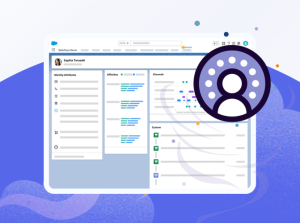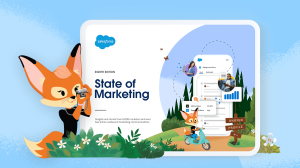Why Stakeholder Alignment is Key to Salesforce Success



In this blog post, you discover how to help customers manage their alignment successfully, ensuring every project delivers value.
Salesforce Authors
One of my key objectives in 2018, is to help my customers manage their alignment successfully, ensuring every project delivers value.
So, in the spirit of sharing, I wanted to put some of the key things I’ve learned about this topic down in a blog post for you to digest and apply to your own projects.
Why is alignment so important?
In many organisations, the business and IT are working in isolation. So for projects, particularly IT-based projects, what typically happens is that the business defines its requirements, and then throws them “over the wall” to IT. IT then implements the requirement, only to be told that it isn’t the solution that the business needs once it’s done.
This is a perfect example of a lack of alignment. For successful programs using Salesforce technology, the path to ROI is secured with a real partnership across all of the business and IT stakeholders working together on a common goal.
This goal should be documented in the program vision and strategy document, which happens to be part of the first principle of COBIT5 – a business framework standard for the governance and management of enterprise IT.
When alignment goes wrong
When programmes are out of alignment, it can delay or even destroy potential ROI.
I have a great example – I visited the CIO of a UK company where the project costs were out of control for the delivery of a specific application. The aim of the project was to automate a paper-based construction defect process. He wanted to understand why the project wasn’t working.
Here’s what we discovered:
- The previous paper-based system was very complex and the associated requirements of that system were not clearly communicated to the development teams.
- The whole project budget was owned by IT. The business wasn’t involved, and no money or resources had been secured for User Acceptance Testing (UAT) around the project – because the business users had different priorities.
- The end-users did not see the value or benefits of automating the current process, as they were used to the old way of working, so they simply didn’t use the new system (see my previous blog post Five Steps to Better Adoption of Your Cloud Applications to overcome this)
At the end of the meeting, we concluded that had alignment been created at the start, the outcome would have been very different for this particular project. We were able to rescue the deployment, but it took time and resources to do so.
So how can your programme achieve alignment from the start?
Let’s start with your stakeholders. When programs discuss stakeholders, they normally discuss the program executive sponsor or senior IT and business leaders. Yes, it’s paramount to engage these stakeholders, but there are two other groups of stakeholders that are just as important to the success of the project: middle management and end users.
Middle Management is the critical layer in most companies, as they are very focused on keeping the “lights on” and delivering their annual commitments within their allocated budget. The creation of their annual plan normally involves a long and complex approval process. Additional new unplanned projects during the year are normally ignored – or limited effort is allocated to understand their impact.
So if the new program is going to be successful, then the relevant middle management (IT and business) leaders need to be engaged. Show them that you know their challenges and explain how the new program will help deliver their agreed commitments. This discussion should always be focused on “what is in it for them.”
Don’t go to the next step until you’ve secured buy-in from this key stakeholder group.
End Users: And now for the people who make or break your implementation – the people who will use it every day. For your deployment to be successful, adoption is critical for every persona in the business. Let’s be realistic – no one really loves change to their daily work rituals, so it’s important to engage with these stakeholders in groups by their planned usage (personas) early in the process and communicate clearly what’s in it for them.
By engaging these stakeholders, you’ll help the program team(s) understand user adoption challenges early. These challenges need to feed quickly into the project teams and the concerns addressed, which may involve product, training and/or support alterations to the overall project map.
One vision
After you have engaged all the stakeholders, the key is to drive full alignment across all stakeholder groups, preferably through a common program vision and strategy, created by the program team and approved by all the executive stakeholders.
This vision should be in business terms and include clear business outcomes that the program wants to achieve. The document also should have a clear set of measurements attached to the project to verify that the business outcomes are being achieved. If possible these project KPIs should have a direct linkage to executive stakeholder KPIs.
The draft should be circulated to all the stakeholder to secure their feedback. The document should be revised to incorporate the feedback, which secures buy-in.
A great example is the way we here at Salesforce drive alignment within our company, from the board level and Marc Benioff right down to every employee. Check out this great Trailhead trail to understand this simple, yet powerful approach: How to Drive Organizational Alignment with V2MOM






















